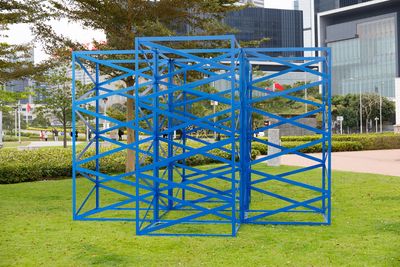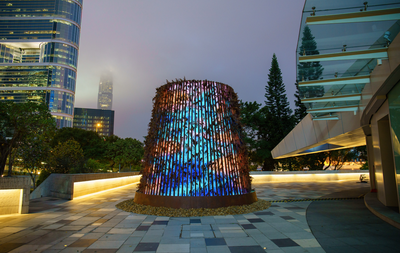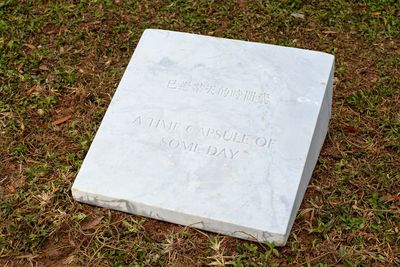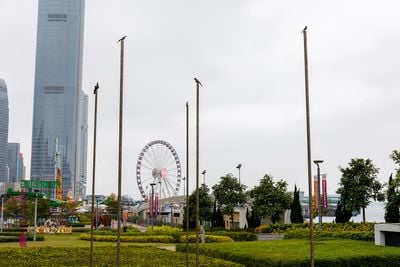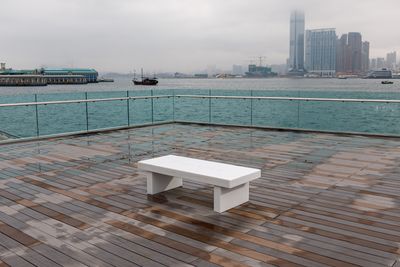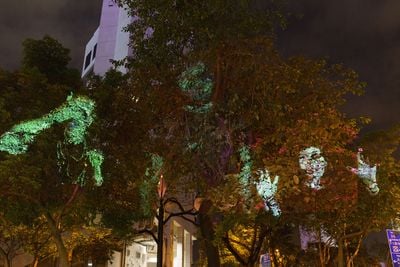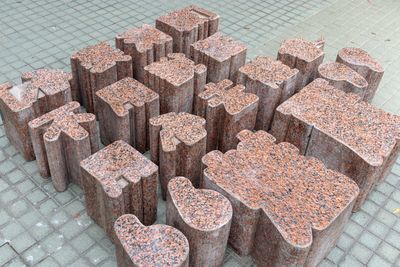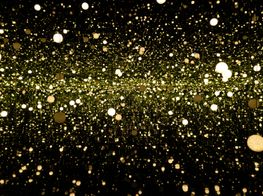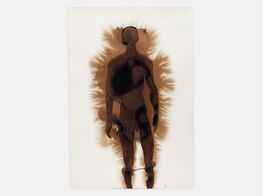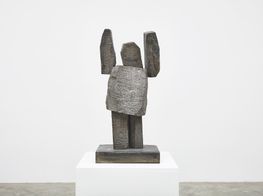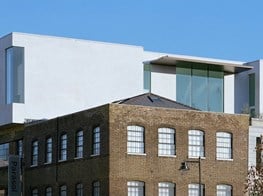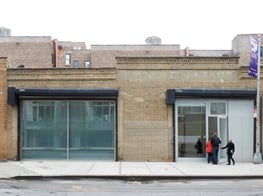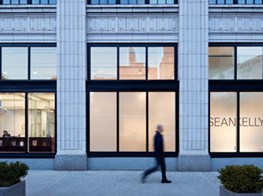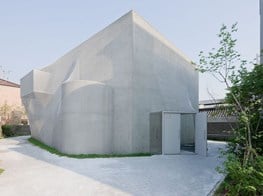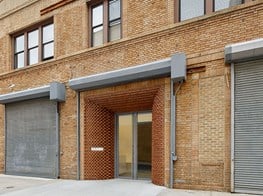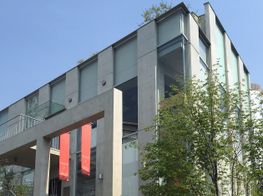In Memory of a Free Public: Harbour Arts Sculpture Park

Zhan Wang, _45 Degrees of Artificial Ro_ck (2014). Stainless steel. 582 x 127 x 60 cm (rock); 33 x 125 x 125 cm (base). Installation view: Harbour Arts Sculpture Park 2018, Hong Kong (22 February–11 April 2018). Courtesy Harbour Arts Sculpture Park.
It was at Tamar Park that the initial sit-ins took place around the Legislative Council in Hong Kong, sparking the Umbrella Movement in 2014. Thousands of students advocated for universal suffrage in the response to electoral reforms enacted on Hong Kong by China's Standing Committee of the National People's Congress. It was here, on 26 September that year, when public opinion of the Hong Kong police force went south as they forced peaceful protestors off the lawn.
Installed on a grassy corner of the park now rests Kacey Wong's sculptural work Asteroids & Comets (2017): matte gold steel rods welded together to form six outlines of abstract forms that represent a model for the cosmos. Resting on freshly disturbed earth, the work is both monument and memorial—a recurring theme among the 21 works by 19 local and international artists that make up the Harbour Arts Sculpture Park exhibition. Installed along Hong Kong's Central and Western District waterfront promenade, from Tamar Park in Admiralty to the Hong Kong Academy for Performing Arts and Hong Kong Arts Centre in Wan Chai, the exhibition claims to be Hong Kong's first international sculpture park. Launched on 22 February 2018 and running until 11 April 2018, it was curated by Artistic Director of Royal Academy of Arts Tim Marlow, and Director of Mori Art Museum and Director of International Programme at Hong Kong Art School Fumio Nanjo, with no theme or title.
A majority of the exhibition is situated amid the city's government headquarters and set against the backdrop of the iconic Hong Kong skyline, treated here as architectural inspiration and Sinofuturist backdrop. Allusions to Hong Kong's impressive urban landscape include Rasheed Araeen's Hong Kong Blues (2018), a blue minimalist architectural structure that is rife with repetition, mirroring the lattice of I.M. Pei's Bank of China Tower seen behind it. Similarly, Conrad Shawcross' The Dappled Light of Sun 1 (2015) consists of a five-tonne bronze latticed grid mounted on tripods that stand over six metres tall. Originally displayed at the Royal Academy's Summer Exhibition in 2015, the sculpture projects shadows onto the ground below, with light filtering through the patterned holes cut through the bronze surface.
Other works are more critical of the fraught experience that rapid urbanisation and transformation in Hong Kong has wrought. Taking into account the reclamation that has occurred throughout the city, first under the British and now with the Chinese, is Wong Chi-Yung's The Memories from The Tower of Light (2017). This light sculpture is inspired by the soft power of the sea, even if its beauty in Hong Kong is a thing of the past. A large metallic lampshade husk is covered with foliage and encircled by small stones, with colourful and warm lighting emanating from the centre that shifts according to the time of day, glowing brightly at night. Placed outside the Hong Kong Academy of Performing Arts, The Tower of Light acts as a beacon that calls people to the enchanting shores of memories long forgotten.
Offering another point of recall is Morgan Wong's intervention, Time Needle (A Time Capsule of Some Day) (2018), which considers urban development as a series of fresh graves and fresh wounds. For this piece, the artist laid a marble tombstone on the ground with a Chinese inscription and its English translation, 'A Time Capsule of Some Day', underneath which he buried the shavings from when the artist filed down a steel bar until it became a needle.
In other cases, fragments arranged on the brink of Victoria Habour feel like highly produced ruins amidst the downfall of a grand civilisation. Matthew Tsang Man Fu's Before Collapse (2018) consists of two monumental flip flop-wearing feet cast from the artist's feet and lower calves, which have been made from reinforced steel and fibre glass covered in a charcoal mixture. Gimhongsok's Bearlike Construction (2012) is a bronze teddy-bear made up of cast garbage bags. Contrasting with these expressions of urban decay are works made from inorganic materials that reference organic form, contextualised in this setting as points of contemplation in the garden-graveyard that this sculpture park seems to embody. These include Bosco Sodi's large, gold, ceramic glazed volcanic rocks, Untitled (2017); Antony Gormley's one-piece vertical sculpture made of cast iron cubes DAZE VI (2016); Zhan Wang's dramatic stainless steel rendition of a stone slab teetering at a 45-degree angle, 45 Degrees Artificial Rock (2014); and, of course, a grandstanding Yayoi Kusama Pumpkin: big (2008).
Throughout, works speculate on notions of liberty. Tracey Emin's A Moment Without You (2017), for instance, is an iteration of her first public work Roman Standard (2005), which plays on the militaristic symbolism of ancient Roman military standards, when flags and banners were hung from tall staffs identifying cavalry or infantry. For her Hong Kong sculpture, Emin subverts this grandiose historical reference by replacing the eagles of the Roman legion with small birds, which she describes as 'angels of this earth' that represent 'freedom'. These birds have been cast into bronze and each sit atop a thin bronze-and-silver nitrate rod.
Outside the main doors of the Hong Kong Arts Centre, Hank Willis Thomas presents Ernest and Ruth (2015), a painted steel empty speech bubble, and The Truth Bubble Sign Tree (2015), which forms part of an ongoing series consisting of painted steel speech bubbles that, in Hong Kong, spell out in English and traditional Chinese: 'The truth is I love you!'
How Hong Kong people occupy their speech is a contentious topic in a city whose inhabitants are contending with a gradual withdrawal of Cantonese from public life. (Beijing has been pushing for classes to be taught in Mandarin in Hong Kong's schools.) As if in reflection of this state of affairs, Jenny Holzer's Truisms (2013), four innocuous white marble benches placed in Tamar Park each present clichéd social mores in Cantonese, this time with no English at all: 'Don't place too much trust in experts', 'Freedom is a luxury, not a necessity', 'Money creates taste', and 'Solitude is enriching'.
The voice and its removal is also considered in Tony Oursler's Flow (2017): a three-channel video projection that engages with computer-generated speech and offers a pessimistic take on artificial intelligence, given its speculation on when Siri, Alexa, and Echo will take our voices away from us. Spiritual Tour in the Pure Garden: Charm (2014) is another language-based work, except the idiom featured here is invented by the artist Zheng Guogu; it comprises a rock sculpture installation of red granite cubes cut to form the Chinese text, 'Spiritual Tour in the Pure Garden', with rounded edges. An artist's proposal, the words appear like an imagined spell whose power is yet to be tested, or whose power is measured in the grouping of works that make up this very exhibition.
Of course, public sculpture parks often deal with the immemorial tension between a notion of the commons and monumentality. In other words: audience relations and crystallising events into sculpture. This park is no exception. It was initiated by art-partners, an independent art consultancy in Hong Kong, and presented by the Hong Kong Arts Centre, with support from H Queen's by Henderson Development Limited, and the Hong Kong Arts Development Council. The elaborate education programme that accompanied the Park's inauguration was primarily funded by The Hong Kong Jockey Club Charities Trust, one of the largest charities in the world funded largely by their monopoly on gambling; it included speakers such as Alyssa Nitchun from Creative Time, and Timothy Calnin from Tai Kwun Centre for Heritage and Art.
Up for a limited duration of six weeks, the sculpture park was set up for late March, when Art Basel descends upon the city. The timing is hard to ignore given its association with a market-driven internationalism that pays special care to reflect the local context in order to avoid accusations of neo-colonialism. Of the nineteen artists included in this presentation, eight are represented by galleries based in or with a space in Hong Kong, who also provided support for the exhibition, with three of these artists represented by galleries outside of Hong Kong, who also supported the sculpture park, and will be showing at this year's Art Basel in Hong Kong. Exceptions include Mark Wallinger, who is represented by Hauser & Wirth but is being supported here by the British Council, Yayoi Kusama, whose work is supported by the Yageo Foundation, and all five Hong Kong artists that were included.
Taken as a whole, then, the Harbour Arts Sculpture Park offers a narrative that reflects Hong Kong's reality, from its architectural and financial infrastructures to the city's ever-changing political present, not to mention its ongoing negotiation with an international art world trying to make its mark on a city already filled with them.—[O]

